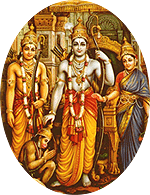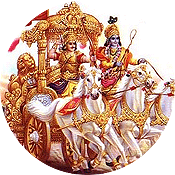Gayatri Solution Group
(Follow Us :- Google +, Yahoo Group, GSG Blog, GSG Website,)
Good News Gayatri Solution Group Create Android App Download Chick Here Server 1, Server 2, Server 3,
(Follow Us :- Google +, Yahoo Group, GSG Blog, GSG Website,)
Good News Gayatri Solution Group Create Android App Download Chick Here Server 1, Server 2, Server 3,
Diwali History
It is since ancient times that Diwali has been celebrated. It is not easy to say now what really was the reason behind its origin. Different people believe different events to be the cause behind this festival. Here are ten mythical and historical reasons that are possibly behind the Diwali (Deepavali) celebrations.
 The most well known story behind Diwali is in the Ramayana, the great
Hindu epic. According to Ramayana, Rama, the prince of Ayodhya was
ordered by his father, King Dasharatha, to go away from his country and
come back after living in the forest for fourteen years. So Rama went on
exile with his devoted wife Sita and faithful brother, Lakshmana. When
Ravana, the demon king of Lanka abducted Sita and took her away to his
island kingdom of Lanka, Rama fought against and killed Ravana. He
rescued Sita and returned to Ayodhya after fourteen years. The people of
Ayodhya were very happy to hear of their beloved prince's homecoming. To
celebrate Rama's return to Ayodhya, they lit up their houses with
earthen lamps (diyas), burst crackers and decorated the entire city in
the grandest manner.
The most well known story behind Diwali is in the Ramayana, the great
Hindu epic. According to Ramayana, Rama, the prince of Ayodhya was
ordered by his father, King Dasharatha, to go away from his country and
come back after living in the forest for fourteen years. So Rama went on
exile with his devoted wife Sita and faithful brother, Lakshmana. When
Ravana, the demon king of Lanka abducted Sita and took her away to his
island kingdom of Lanka, Rama fought against and killed Ravana. He
rescued Sita and returned to Ayodhya after fourteen years. The people of
Ayodhya were very happy to hear of their beloved prince's homecoming. To
celebrate Rama's return to Ayodhya, they lit up their houses with
earthen lamps (diyas), burst crackers and decorated the entire city in
the grandest manner.This is believed to have started the tradition of Diwali. Year after year this homecoming of Lord Rama is commemorated on Diwali with lights, fireworks, bursting of crackers and merriment. The festival gets its name Deepawali, or Diwali, from the rows (avali) of lamps (deepa) that the people of Ayodhya lit to welcome their King.
 Another well known story related to Diwali history is narrated in the
other Hindu epic, 'Mahabharata'.
Another well known story related to Diwali history is narrated in the
other Hindu epic, 'Mahabharata'.Mahabharata reveals to us how the five royal brothers, the Pandavas, suffered a defeat in the hands of their brothers, the Kauravas, in a game of dice (gambling). As a rule imposed on them, the Pandavas had to serve a term of 13 years in exile. When the period was over, they returned to their birthplace Hastinapura on 'Kartik Amavashya' (the new moon day of the Kartik month). The five Pandava brothers, their mother and their wife Draupadi were honest, kind, gentle and caring in their ways and were loved by all their subjects. To celebrate the joyous occassion of their return to Hastinapura and to welcome back the Pandavas, the common people illuminated their state by lighting bright earthen lamps everywhere. The tradition is believed to have been kept alive through the festival of Diwali, which many believe, is held in remembrance of the Pandava brothers' homecoming.
It is also believed that on this very Diwali day, the Goddess of wealth, Lakshmi rose up from the ocean. The Hindu scriptures tell us that long long ago both Devas (gods) and Asuras (demons) were mortal. They had to die sometime or other, like us. But they wanted to live forever. So they churned the ocean to seek Amrita, the nectar of immortality (an event mentioned in the Hindu scriptures as "Samudra-manthan"), during which many divine objects came up. Prime among these was Goddess Lakshmi, the daughter of the king of the milky ocean, who arose on the new moon day (amaavasyaa) of the Kartik month. That very night, Lord Vishnu married her. Brilliant lamps were illuminated and placed in rows to mark this holy occassion. This event is supposed to have given rise to an annual celebration at the same time each year. Even today, Hindus celebrate the birth of the goddess Lakshmi and her marriage to Lord Vishnu on Diwali and seek her blessings for the coming year.
The origin of Diwali also refers to the stories narrated in the Hindu Puranas, the primary source of Hindu religious texts. According to the Bhagavata Purana (the most sacred Hindu text), it was on a Kartik day that Lord Vishnu, took on the form of a dwarf (Vaman-avtaara) and defeated King Bali. Bali, or rather King Mahabali, was a powerful demon king who ruled the earth. Once Bali got a boon from Lord Brahma that made him unconquerable. Even gods failed to defeat him in battles. Although a wise and good king otherwise, Mahabali was cruel to the Devas (gods). Finding no way to defeat Bali, the Devas went to Lord Vishnu and insisted him to find a way to stop Bali. Lord Vishnu made a plan. He disguised himself as a short Brahmin and approached Bali for some charity. A large-hearted king, Mahabali tried to help the Brahmin. But the whole thing was a trick by Lord Vishnu and ultimately the King had to give up all his kingship and wealth. Diwali celebrates this defeating of Mahabali by Lord Vishnu.
The Bhagavata Purana also tells us about Narakasura, an evil demon king who somehow got great powers and conquered both the heavens and earth. Narakasura was very cruel and was a terrible ruler. It is believed that Lord Vishnu killed Narakasura on the day before Diwali and rescued many women whom the demon had locked in his palace. The people of heaven and earth were greatly relieved to have got freedom from the hands of the terrible Narakasura. They celebrated the occassion with much grandeur, a tradition that is believed to be alive through the annual observance of Diwali.
 According to another legend, long ago after the gods lost in a battle
with the demons, Goddess Kali took birth from the forehead of Goddess
Durga to save heaven and earth from the growing cruelty of the demons.
After killing all the devils, Kali lost her control and started killing
anyone who came her way which stopped only when Lord Shiva intervened.
You all must have seen the well-known picture of Ma Kali, with her
tongue hanging out? That actually depicts the moment when she steps on
Lord Shiva and stops in horror and repentance. This memorable event has
been commemorated ever since by celebrating Kali Puja, which is observed
in several parts of India in about the same time as Diwali.
According to another legend, long ago after the gods lost in a battle
with the demons, Goddess Kali took birth from the forehead of Goddess
Durga to save heaven and earth from the growing cruelty of the demons.
After killing all the devils, Kali lost her control and started killing
anyone who came her way which stopped only when Lord Shiva intervened.
You all must have seen the well-known picture of Ma Kali, with her
tongue hanging out? That actually depicts the moment when she steps on
Lord Shiva and stops in horror and repentance. This memorable event has
been commemorated ever since by celebrating Kali Puja, which is observed
in several parts of India in about the same time as Diwali. Historically it is believed that on a Diwali day in 56 BC King Vikramaditya, the legendary Hindu king of India famed for his wisdom, bravery and large-heartedness, was crowned and declared to be a king. This was marked by a grand celebration by the citizens of Vikramaditya's kingdom celebrated the coronation of their king by lighting up small earthen lamps and that custom still prevails. Many people and even some historians say that this event gave rise to the annual observance of Diwali.
Diwali also marks the sacred occasion when on a new moon day of Kartik (Diwali day) Swami Dayananda Saraswati, one of the greatest reformers of Hinduism attained his nirvana (enlightenment) and became 'Maharshi' Dayananda, meaning the great sage Dayananda. In 1875, Maharshi Dayananda founded the Arya Samaj, "Society of Nobles", a Hindu reform movement to purify Hinduism of the many evils it became associated with at that era. Every Diwali, this great reformer is remembered by Hindus all over India.
For Jains, Diwali commemorates the enlightenment of Vardhamana Mahavira(the twenty-fourth and last Tirthankaras of the Jains and the founder of modern Jainism) which is said to have occurred on Oct. 15, 527 B.C. This is one more reason to engage in Diwali celebrations for pious Jains and other than the purpose of commemoration, the festival stands for the celebration of the emancipation of human spirit from earthly desires.
For Sikhs, Diwali holds a special significance for it was on a Diwali day that the third Sikh Guru Amar Das institutionalized the festival of lights as an occasion when all Sikhs would gather to receive the Gurus blessings. It was also on a Diwali day in 1619 that their sixth religious leader, Guru Hargobind Ji, who was held by the Mughal Emperor Jahengir in the Gwalior fort, was freed from imprisonment along with 52 Hindu Kings (political prisoners) whom he had arranged to be released as well. And it was also on the same auspicious occasion of Diwali when the foundation stone of the Golden Temple at Amritsar was laid in 1577.
Read more at http://www.kidsgen.com/events/diwali/history.htm#FzfmZfQ6ZTmXDiIw.99
Source :-http://www.kidsgen.com/events/diwali/history.htm
Products :-CPU,
Motherboard, RAM, HDD, LCD – LED, Keyboard, Mouse, DVD Writer, SMPS,
Speaker, Battery, Adapter, Cooling Pad, Screen Guard, Bag, Internet
Dongles, Blank CD – DVD, Pen drive, Web Camera, Microphone, Headphone,
External CD Drive, Cables, Projector, Scanner, Printer, Education CD -
DVD etc…
More Products List Click Here
More Products List Click Here
Note :- Purchase any products just email inquiry.gsg13@gmail.com
Published By :-
Gayatri Solution Group
Email :- inquiry.gsg13@gmail.com


No comments:
Post a Comment